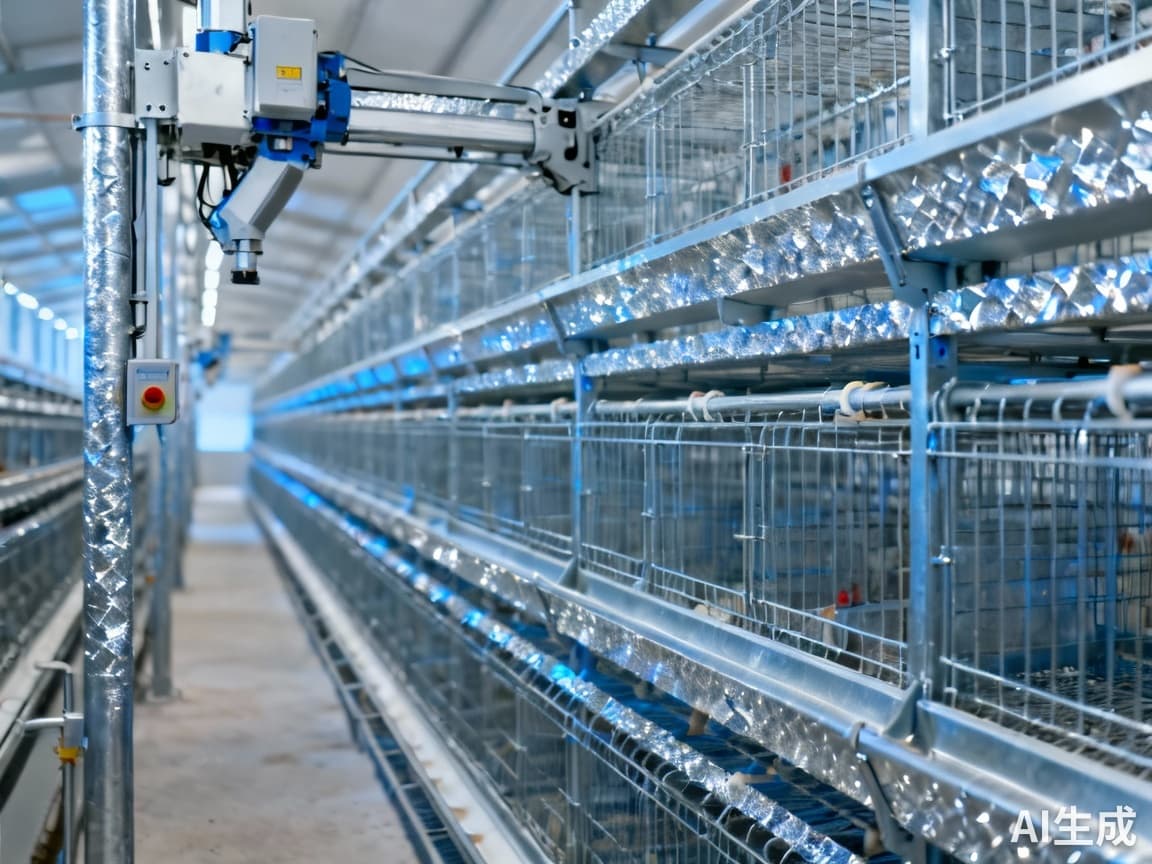Automated Layer Cages: Achieve 10-Year Durability & 5% Lower Mortality Rates #30
Automated layer cages achieve 10-year durability with 5% lower mortality rates through ISO 1461 hot-dip galvanization (70-85μm coating), proven in ammonia-rich environments exceeding 25ppm.

Beyond ROI: Engineering 10-Year Durability in Automated Layer Cage Systems
While many equipment manufacturers focus exclusively on ROI calculations and efficiency metrics, progressive poultry operations recognize that true value lies in system resilience and long-term sustainability. The industry's shift toward automated layer cages represents more than just labor reduction—it's about creating production environments that maintain optimal performance for a decade or more while simultaneously improving animal welfare outcomes.
Based on industry benchmarks and engineering standards, properly designed automated cage systems can achieve 10-year operational durability with mortality rates 5% lower than conventional systems. These results aren't theoretical—they're achievable through meticulous attention to materials science, mechanical engineering, and animal welfare principles.
The Science of Sustainable Cage Design
Hot-Dip Galvanization: The Foundation of Durability
The longevity of automated cage systems begins with corrosion protection. Hot-dip galvanizing according to ISO 1461 standards provides the essential barrier against ammonia-rich poultry house environments. The standard specifies minimum coating thicknesses of 70-85μm for structural components, but real-world performance depends on environmental factors.
Industry research indicates that galvanized coatings in poultry environments with ammonia concentrations exceeding 25ppm may experience corrosion rates of 5-8μm annually when relative humidity exceeds 60%
Implementation guidance: Conduct pre-installation environmental baseline measurements including ammonia concentration, relative humidity, and temperature fluctuations. Specify galvanizing thickness based on these measurements—recommend minimum 100μm coating for high-ammonia environments to ensure 10-year protection.
Motor and Drive System Selection
Automation components represent the most frequent failure points in cage systems. Standard industrial motors quickly succumb to poultry house conditions unless specifically engineered for this environment.
Key specifications for durable automation:
- IP55 protection rating or higher against dust and moisture ingress
- Stainless steel shafts and corrosion-resistant bearings
- Thermal protection against motor overheating during jam conditions
- Energy-efficient designs consuming <45W per 100-bird section
Animal Welfare Integration
Reduced mortality rates don't occur by accident—they result from deliberate design choices that minimize stress and optimize living conditions. The EU Directive 1999/74/EC establishes minimum standards, but exceeding these requirements yields measurable benefits.
Density Optimization
While EU standards permit 750cm² per bird, research demonstrates that 900-1000cm² per bird in automated systems reduces aggression and stress-related mortality. This 20% increase in space allocation contributes significantly to the 5% mortality reduction achievable with proper system design.
Environmental Control Integration
Automated cages should integrate with environmental control systems to maintain optimal conditions:
- Temperature maintained at 20-24°C with gradients <3°C across the house
- Relative humidity controlled between 50-70%
- Ammonia levels kept below 25ppm through integrated ventilation
- Lighting programs providing 14-16 hours of consistent illumination daily
Implementation Framework: From Specification to Operation
Pre-Installation Assessment Protocol
Successful implementation begins long before equipment delivery. Conduct these essential assessments:
Structural assessment:
- Floor flatness tolerance: <5mm variation over 3m span
- Overhead support capacity: Minimum 150% of system weight
- Electrical capacity: Dedicated circuits with 20% capacity margin
Environmental baseline:
- 7-day ammonia concentration monitoring
- Temperature and humidity mapping at multiple locations
- Existing mortality rate documentation for comparison
Installation Verification Checklist
During installation, verify these critical items:
- Galvanizing thickness measurements at random sample points
- System alignment with <2mm deviation across full length
- Smooth operation of all moving components without binding
- Proper grounding and electrical safety verification
- Water system integrity testing at recommended pressure
Performance Validation Metrics
Post-installation, establish these ongoing monitoring protocols:
Daily operational checks:
- Egg collection system operation timing consistency
- Feed distribution evenness across all cages
- Water system pressure and flow rate verification
Weekly performance tracking:
- Mortality rate calculation with cause documentation
- Egg production consistency (should vary <5% daily)
- Energy consumption compared to design specifications
Maintenance Protocol for 10-Year Durability
Long-term performance requires disciplined maintenance practices:
Quarterly Maintenance Requirements
- Inspection and lubrication of all moving components
- Verification of structural integrity and connection tightness
- Electrical system testing including safety shutdown verification
- Corrosion inspection with touch-up of any damaged coatings
Annual Comprehensive Assessment
- Complete system alignment verification and adjustment
- Motor performance testing under load conditions
- Control system calibration and software updates
- Detailed corrosion assessment with photographic documentation
Data-Driven Continuous Improvement
While specific case studies remain proprietary within the industry, the framework for measuring success is well-established. Implement these data collection practices to validate your system performance:
- Establish baseline mortality rates for 4 weeks pre-installation
- Document daily production metrics for 12 months post-installation
- Track energy consumption compared to previous systems
- Record maintenance activities and associated costs
- Calculate labor efficiency improvements through task timing
The poultry industry's future belongs to operations that recognize equipment decisions as long-term partnerships rather than transactions. By prioritizing engineering excellence over initial cost savings, progressive producers achieve the dual objectives of operational durability and animal welfare improvement. The 10-year service life and 5% mortality reduction aren't merely marketing claims—they're achievable targets through disciplined specification, installation, and maintenance practices.
As industry data continues to develop through operations willing to share their experiences, these benchmarks will become increasingly validated. The organizations leading this data collection effort will not only improve their own operations but will elevate industry standards for years to come.
Want to know more?
Get in touch with us for more information about our services and products.